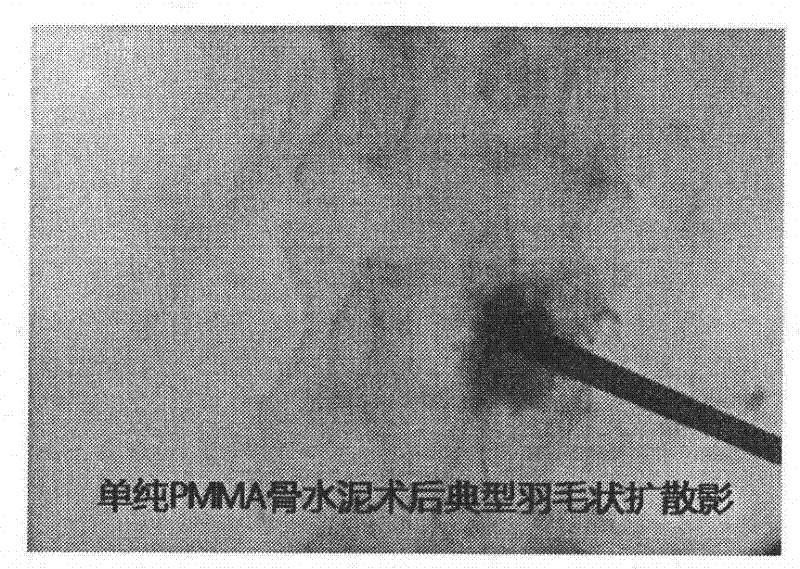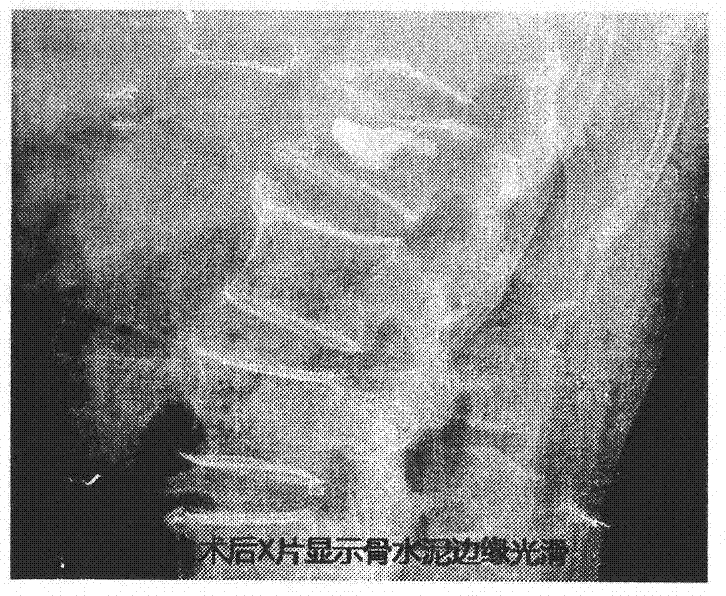Novel mixed bone cement
A new type of bone cement, applied in the fields of medical science, dentistry, dental preparations, etc., can solve the problems of poor compatibility, the occurrence of abrasive disease, and the inability to osseous fusion.
- Summary
- Abstract
- Description
- Claims
- Application Information
AI Technical Summary
Problems solved by technology
Method used
Image
Examples
Embodiment Construction
[0029] During the clinical process of this project, it was found that 20% "Guyisheng" (TradeMark CEM) (50-60% calcium sulfate, 20-25% hydroxyapatite, 20-25% calcium triphosphate) was added to 80% PMMA The resulting "mixed bone cement" has the characteristics of high viscosity, low fluidity and uniform mixing. In 1991, Qiu Shijing and others mixed decalcified bone particles into bone cement in a certain proportion. Through scanning electron microscope observation, they found that bone particles were connected to each other in many areas to form connected tunnels for bone structure to grow into. At 3 months, a large amount of bone tissue grew into the deep layer of bone cement along the channel formed by bone particles, and lamellar bone structure was visible. The "Gu Yisheng" in this experimental study also has osteoinductive effect, and will not cause rejection with the body. It is very convenient to mix with PMMA, and the feasibility of intraoperative use is higher. Under th...
PUM
 Login to View More
Login to View More Abstract
Description
Claims
Application Information
 Login to View More
Login to View More - R&D
- Intellectual Property
- Life Sciences
- Materials
- Tech Scout
- Unparalleled Data Quality
- Higher Quality Content
- 60% Fewer Hallucinations
Browse by: Latest US Patents, China's latest patents, Technical Efficacy Thesaurus, Application Domain, Technology Topic, Popular Technical Reports.
© 2025 PatSnap. All rights reserved.Legal|Privacy policy|Modern Slavery Act Transparency Statement|Sitemap|About US| Contact US: help@patsnap.com



